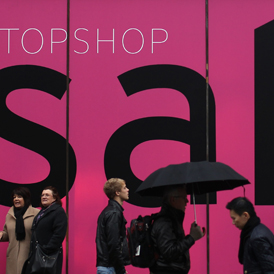High Streets at ‘crisis point’
A third of high streets are “degenerating or failing”, according to a government commissioned review by TV retail expert Mary Portas.

By 2014 less than 40% of retail spending will be on the high street, according to the study, which also found that over the past decade out of town retail floorspace has increased by almost a third while in towns it has shrunk by 14%.
“I believe that our high streets have reached a crisis point. Unless urgent action is taken, much of Britain will lose, irretrievably, something that is fundamental to our society, and which has real social and economic worth to our communities,” she said.
The report proposed plans for a national market day in a bid to promote indoor or outdoor markets and help drive traffic towards shops.
She also urged that licensing rules for market stalls should be relaxed to make it easier for people to set up stands in their local high street.
Richard Dodd, from the British Retail Consortium, said: “It seems that there are a good number of sensible ideas in the report which, if taken together and adopted, could make a difference to many of our troubled high streets.
“Clearly a national market day is never going to be the sole solution but alongside a range of other measures it could make a useful contribution to generate interest and stimulate shop numbers, adding to the originality and distinctiveness of particular town centres.”
The Government, which announced in May that Ms Portas would lead the review to try to halt the decline in the number of high street shops, will give its response to the report shortly after it is published.
A report, published in September, found that one in three shops are empty in some parts of the country, with one in seven shops nationally remaining vacant over the past year.
The highest vacancy rates in medium-sized centres were in Dudley (29%), West Bromwich (28%), Hartlepool and Dewsbury (both over 27%), while the lowest were in Falmouth in Cornwall, Walthamstow and Clapham Junction in London and Cirencester, Cotswolds (all 6.6%).
-
Latest news
-
Taylor Swift’s new break-up album breaks records3m

-
NHS trust fined £200K for failings that led to death of two mental health patients3m

-
Sunak vows to end UK ‘sick note culture’ with benefit reform3m

-
‘Loose talk about using nuclear weapons is irresponsible and unacceptable’, says head of UN’s nuclear watchdog3m

-
‘There wasn’t an Israeli attack on Iran,’ says former adviser to Iran’s nuclear negotiations team7m

-




